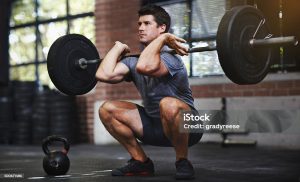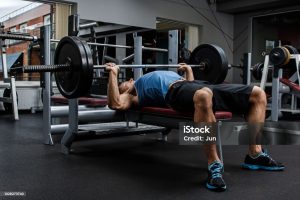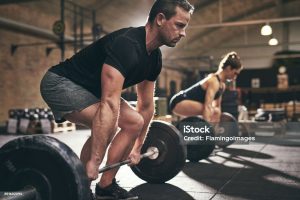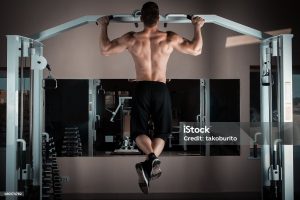Isolation vs. compound lifts
Introduction
Today, I’ll discuss the significance of compound and isolation movements in bodybuilding. Many people begin their workouts with compound exercises and then switch to isolation exercises. I often get asked on Instagram, Facebook, and in person which is more effective: compound or isolation movements. In this discussion, I’ll break down the benefits of each type of exercise, when to incorporate them into your routine, and how to choose the best approach for your goals.

Definitions
Let’s begin by defining each type of movement. Isolated movements involve only a single joint, which is exactly what the term suggests. For instance, during a bicep curl, the primary joint in action is the elbow. Although there is some shoulder movement, it’s minimal and not significant enough to affect the exercise’s classification. The bicep curl primarily targets the elbow joint, making it an isolated movement.

Another example of isolated movements includes leg curls and leg extensions. When performing leg extensions, you sit on the machine and extend your legs, focusing on your quads. Similarly, in leg curls, you lie on the machine and curl your legs, targeting your hamstrings. In both exercises, only the knee joint is involved, making them clear examples of isolated movements.

Isolation movments
Isolation movements are particularly beneficial when you want to focus on a specific muscle at a time. By isolating a particular movement, you can concentrate all your effort on that muscle group, which helps in developing its shape and targeting any lagging areas. For instance, consider the tricep pushdown exercise. By adjusting the angle at which you push down, or by varying the elbow positioning, you can target different parts of the tricep, such as the long head or the short head. This allows you to work on the complete development of the tricep and achieve a well-defined horseshoe shape. Isolating specific muscle parts enables you to address weaker areas and build overall muscle definition more effectively.

Isolation exercises are a valuable tool, but now let’s shift our focus to compound movements. As the name suggests, compound movements involve multiple muscle groups. For instance, during the bench press, although it might seem like only your chest is working, several muscles are engaged. The bench press primarily involves three muscles: the chest, the front deltoids, and the triceps. In terms of joints, the bench press utilizes both the elbow and shoulder joints. According to the definition of compound movements, any exercise that engages multiple joints to perform the movement is considered a compound movement.

compound movements
Compound movements are highly effective for building mass, muscle, and strength because they engage multiple joints and muscle groups simultaneously. This involvement allows you to lift heavier loads, which in turn maximizes muscle stimulation. As a result, these exercises can be incredibly challenging and leave you feeling that your workout was impactful. For example, during the bench press, pressing a significant amount of weight targets not just your chest but also involves your triceps and front deltoids, contributing to an intense and rewarding workout experience.

Comparing the bench press to the pec deck, both target the chest, but they differ significantly in their approach. The pec deck isolates the chest, which limits the amount of weight you can push since the exercise focuses solely on that muscle group. In contrast, the bench press allows you to lift much heavier loads because it engages multiple muscles, including the chest, triceps, and front deltoids. This ability to handle greater weights means you can overload your muscles more effectively. Overloading is crucial for stimulating muscle growth, and by targeting multiple muscles simultaneously, compound movements like the bench press contribute to significant gains in muscle mass.

Focusing on the bench press as your primary chest exercise can lead to substantial muscle growth because it engages a range of muscle groups. This single exercise not only targets the chest but also involves the forearms, triceps, front deltoids, and even the core. Holding and pressing the weight works your forearms as secondary muscles, which will grow in response. Additionally, the heavy lifting engages your triceps and chest muscles, promoting their development. Your front deltoids will also benefit from the movement, and keeping your core tight during the exercise helps strengthen your abs. Moreover, the engagement of your lats, although secondary, contributes to overall upper body development. Thus, the bench press is highly effective for building mass across multiple muscle groups.

Compound movements are indeed the most effective for building muscle mass. Take squats, for instance. When performing squats, whether you’re using a barbell on your back or doing front squats, it might seem like a leg exercise, but it involves a wide range of muscles. The primary focus is on your quadriceps, but the exercise also engages your hamstrings, glutes, and lower back. Additionally, your upper back works hard to stabilize the weight, and your calves are involved to some extent as well. This comprehensive engagement of various muscle groups makes squats an excellent compound movement for overall muscle development.

Benefits of each
To build significant muscle mass, focusing on compound movements is key. These exercises should form the core of your workout, especially for developing muscle around the torso. Compound movements are highly effective for overall muscle growth because they engage multiple muscle groups simultaneously. However, isolated movements are also important and should be incorporated at the end of your workout.
For instance, while pushing exercises like bench presses work your triceps, they may not fully develop them. Incorporating tricep extensions ensures that your triceps receive the focused attention they need. Similarly, pulling exercises such as barbell rows target your back and engage your biceps, but additional isolation work for the biceps can enhance their development.
While compound movements are sufficient for chest development, isolating other muscles—like your triceps, biceps, and shoulders—can provide additional benefits and help achieve a well-rounded physique. Therefore, the best approach is to start your workout with compound movements to exhaust your primary muscle groups, and then finish with isolation exercises to target specific areas for further growth.

From my experience lifting for over 8 years, I’ve observed a common trend in the gym: many people focus solely on compound movements for their torso and neglect isolated exercises. While their torso becomes well-developed, their arms often remain underdeveloped, leading to an imbalanced physique. On the other hand, some individuals concentrate only on isolated arm exercises, ignoring compound movements. As a result, their arms might be well-developed, but their torso remains less built.
The key to a well-rounded physique is to strike a balance between both approaches. Incorporate compound movements to build overall muscle mass and strength, and add isolated exercises to ensure that all muscle groups, including the arms, are developed proportionately. This balanced strategy will help you achieve a more aesthetically pleasing and well-rounded physique.

Another aspect to consider is the complexity of compound versus isolated movements. Isolated movements, involving only one joint, are relatively straightforward to perform and learn. This simplicity often leads to individuals having well-developed biceps and triceps, but less progress in their torso development, such as the chest and shoulders.
Compound movements, on the other hand, are more complex due to the involvement of multiple joints and muscle groups. For example, mastering the bench press requires more than just lying on the bench and pushing weight. It involves proper techniques such as arching your back, retracting your scapula, maintaining a tight core, and coordinating all these elements to engage the target muscles effectively. This complexity makes compound movements challenging to master, but they are highly rewarding in terms of muscle growth and overall development.
While isolated exercises are easier to perform and require less specialization, compound movements offer significant benefits for building muscle mass and strength, making them essential despite their complexity.



